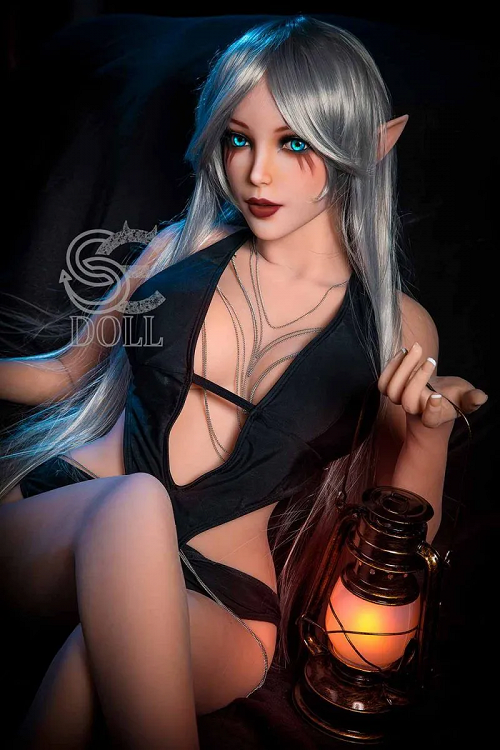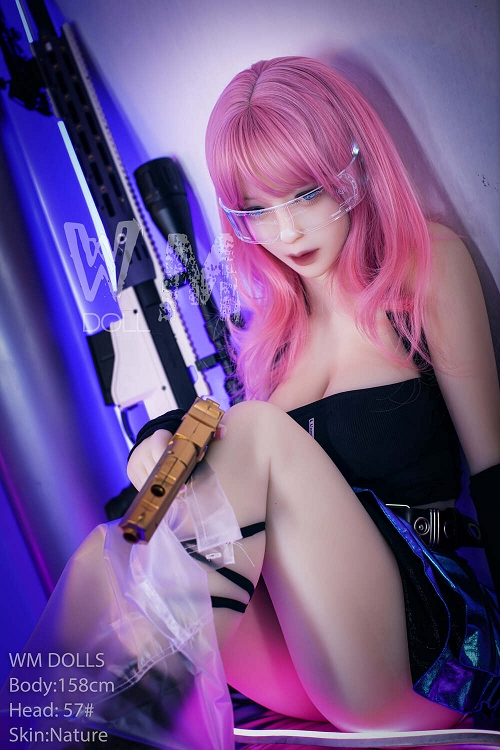Wigs are no longer just accessories for stage performances or medical needs; they have become fashion essentials and an important part of creating versatile looks. Whether for dolls, cosplay, daily wear, or intimacy, the choice of wig fiber directly affects realism, comfort, and durability.
This guide explores the different types of wig fibers available today, their advantages, disadvantages, and how to select the perfect one for your needs.
🔬 Synthetic Fiber Wigs: Affordable and Versatile
Synthetic wigs are made from artificial fibers such as Kanekalon or Toyokalon, which are designed to mimic the look and feel of natural hair.
Pros:
Budget-friendly and widely available.
Pre-styled fibers hold their shape even after washing.
Lightweight and easy to wear.
Cons:
Limited heat resistance (cannot be curled or straightened with hot tools unless labeled heat-safe).
Shorter lifespan compared to human hair wigs.
Shine can sometimes look artificial under bright light.
Best For: Beginners, casual wear, or those looking for a wide variety of colors and trendy styles at an affordable price.
🔥 Heat-Resistant Synthetic Wigs: Styling Freedom
Heat-friendly synthetic fibers are an upgraded option. They allow styling with curling irons or straighteners (usually up to 150–180°C).
Pros:
Combines affordability with styling flexibility.
Holds curls or straight styles after heat application.
More natural finish than standard synthetic wigs.
Cons:
Shorter lifespan than non-heat synthetic fibers due to heat damage risk.
Still less durable than human hair.
Best For: Users who want the flexibility to change styles frequently without investing in a full human hair wig.
👩 Human Hair Wigs: The Gold Standard of Realism
Human hair wigs are crafted from natural human hair, offering unmatched realism in appearance and touch.
Pros:
Most realistic look and feel.
Can be cut, colored, and styled just like natural hair.
Longer lifespan with proper care.
Cons:
Higher cost compared to synthetic wigs.
Requires regular maintenance and styling.
Sensitive to weather (frizz, humidity).
Best For: Long-term wearers, professionals, or anyone seeking the most natural look possible.
🌀 Blended Wigs: The Best of Both Worlds
Blended wigs combine human hair with synthetic fibers, usually in varying ratios (30/70, 50/50, etc.).
Pros:
More affordable than 100% human hair.
Retains a realistic appearance with improved durability.
Easier to maintain than pure human hair.
Cons:
Styling limitations depending on fiber mix.
May not feel as soft as 100% human hair.
Best For: People who want realism without the high cost of full human hair wigs.
🧵 Lace Front Wigs: Natural Hairlines
Lace front wigs are not defined by fiber but by construction. They feature lace mesh at the front, giving the illusion of a natural hairline.
Pros:
Highly realistic front hairline.
Works well for updos and styles away from the face.
Cons:
More delicate and requires careful handling.
Often pricier than basic cap constructions.
Best For: Anyone who values a seamless, realistic hairline and wants versatile styling options.
🛠️ Cap Construction and Comfort Factors
The wig cap construction plays a big role in comfort and realism:
Basic Cap: Durable, affordable, but less breathable.
Monofilament Cap: Each hair is hand-tied, giving a realistic scalp appearance.
Full Lace Cap: Allows maximum styling flexibility but requires more care.
Choosing the right cap ensures both realism and comfort during extended wear.
🧴 Maintenance Tips for Wig Longevity
No matter which fiber you choose, care is key:
Use wig-specific shampoos and conditioners.
Store wigs on stands to retain shape.
Avoid high heat for synthetic wigs.
For human hair wigs, regular deep conditioning is essential.
📊 Comparison Table of Wig Fiber Types
| Type | Realism | Styling | Lifespan | Cost | Maintenance |
|---|---|---|---|---|---|
| Synthetic | Medium | Limited | 3–6 months | Low | Low |
| Heat-Resistant Synthetic | Medium-High | Flexible | 3–6 months | Low-Medium | Medium |
| Human Hair | Very High | Unlimited | 1–2 years | High | High |
| Blended | High | Moderate | 6–12 months | Medium | Medium |
🌟 How to Choose the Right Wig for You
When choosing a wig, consider:
Budget: Synthetic for affordability, human hair for luxury.
Usage Frequency: Occasional wear favors synthetic; daily wear may justify human hair.
Desired Look: Lace front and monofilament caps maximize realism.
Styling Habits: If you enjoy changing hairstyles, heat-resistant or human hair wigs are best.
✨ Conclusion
The world of wigs offers endless possibilities, from budget-friendly synthetic options to ultra-realistic human hair designs. Understanding each fiber type helps you find the balance between realism, durability, and cost.
By matching your lifestyle, style preferences, and budget, you can confidently select a wig that enhances both appearance and confidence.























